#pagan holy symbols
Text
Explaining to my friends I like the holy grail but not in a late German romanticism or Indiana Jones way but a monty python, le Morte d'arthur, tarot cards, impossible symbol to reach as the consumption of God's flesh represents connection with god and therefore the complete annihilation of self so the search for its purity can only be found within ones own mind sjeiwlywhwingcgsnlahs
#tarot#tarotblr#le morte d'arthur#arthuriana#holy grail#the holy grail#king arthur#paganism#annihilation of self#yk what sometimes Catholic symbolism hits hard#and by Catholic symbolism lets just say#i mean medieval catholic symbolism
8 notes
·
View notes
Text

Colt is carving a Trinity Knot into a vallet tray. Did you know "Trinity Knots were said to represent the “triple” Pagan God of maiden, mother and crone. As a Christian symbol, it has been used to represent the Holy Trinity. The three domains of earth, sky, and sea. The three stages of birth, life, and death. As a symbol of everlasting love thanks to its “eternal” knot" -source: irishjewel.com
This tray is being made for Wine and Harvest Festival but we do have them in stock on our etsy as well! Use the link below or in my description to check out our etsy shop
starlightbyashley.com
#leather work#leather#trinity knot#triquetra#gift for husband#gift ideas#celtic paganism#pagan#symbols#romantic#christanity#holy trinity#etsyseller#handmade
10 notes
·
View notes
Text
The Septagram {Tau Numatam}

The Numatam or Septagram, is the most sacred of symbols. It is the symbol of our faith and of whole we are as a people. Much like the Cross is to Christians, Star of Davis is to Jews, the Pentagram is to Wiccans and the Greek Key is to Pagan Greeks. The Numatam has many stories, philosophies, and applications attached to it. In the Autumn Wood Tradition the earth symbolized the divine, as the interconnectedness of all things was the sacred message throughout their lives. Nothing was separate from the other, each life force bound to the other and explains the importance of the earth being regarded as our mother who provides for us with food, shelter, and holds water for us when we thirst. There was no one symbol that represented all their philosophies. The tree, the mountain, the river, and the animal were all symbolic and connected to the divine. To further this belief and philosophy the Numatam today represents the seven ideals which those of the Bowynn Tradition uphold and strive for in life, each a guide to daily living.
The points refer to the seven virtues prized by all who follow The Autumn Wood tradition – Peace, Charity, Love, Courage, Kindness, Spirituality and Balance.
Secondly the points refer to the seven principles as mentioned above – Earth, Air, Fire, Water, Soul, Spirit and Balance.
The Numatam also represents the 7 aspects of the forest under which we need to survive – Forest, Wind, Rain/Stream, Hearth, Sun, Moon and Balance.
The Numatam also represents the 7 guilds under which our clans come together as, and each member has a part to partake in – Warriors, Mages, Healers, Weavers, Harvesters, Bards and Librarians.
The Numatam represents the Seven Swords of the Wild Wood, Give to the first 7 chiefs of the first 7 tribes. (This will be touched on later on) – Dennon, Eurya, Kell, Ryos, Aevos, Halis and Tenlon.
The Numatam represents the 7 great rites that befalls a member in the course of his/her life (providing that they are born to the clan – Birth, Naming, Adolescence, Adulthood, Marriage, Death and Resurrection.
Each Line of the Numatam represent a sacred pathway that we follow and meditate on
Lastly, we come to the sphere that encases it all. The circle representing the connection of all of these qualities into one. The circle of life. Totality and enclosure. The embrace of arms around you by the gods.
These philosophies provided here are a general guide and each point and line can be expanded on in great lengths. The Numatam is a wonderful meditation meant to be experienced and explored. One can find even greater meanings to the Numatam through meditation and reflection. For us, and some who practice the following philosophies, feel that the points reflect values in which we choose to honor. The journey through the points is like reading a story with hidden wisdom.
A final word about the Numatam. While most other faiths feel that wearing their holy symbol brings them closer to their divine, Bowynn need not do so. While some Bowynn name were the Numatan as a bracelet, necklace, ring or have it tattooed or painted on their skin, it is not required by any divine law. We live withing the confines of the Numatam. It is with us and all about us wherever we travel. So, one need not have to feel you must by a Numatam pendant.
#pagan#pagan witch#paganism#paganlife#Bowynn#Septagram#Heptagram#Numatan#Holy Symbol#Virtues#Pathways
6 notes
·
View notes
Text
NEW Blog Post Series…. 🚩
Red Flag Symbols for Christians #2
My vacation to California had me get a little behind on my posts for this series. Lol Actually my time in Cali reminded me of another symbol used by many modern artists. This post will focus on the spiritual meanings of the Moth. Both the Chinese Lunar moth and the Death’s Head Hawk moth are two types of moths being used and seen in current witchcraft-related, pagan and gothic art.

From wikiHow: moth symbolism
Moths can represent change, transformation, and growth. Many cultures see moths as symbols of death and believe they bring messages from the afterlife. Others believe that moths symbolize your intuition and encourage you to trust your inner wisdom.

The Chinese lunar moth is used heavily along side the moon phases image and specific plants like mushroom and other herbal plants. Simply with the name of the moth makes sense why wiccans love them so much. Lunar equal “luna” is spanish for “moon”. These specific types of moth artwork are mainly for nature worshipers, pagans, witches and wiccans Other symbols to be aware of like in the second image is the “third eye” at the bottom, the snakes (x2), crystals and of course, the moon on top. The “third eye” usually represents the ability to see beyond/what’s ahead/foreseeing. Crystals are believed to posses the power to heal, a trend that’s been building in popularity in our society. This believe has already been debunck by science; future blog post to come.
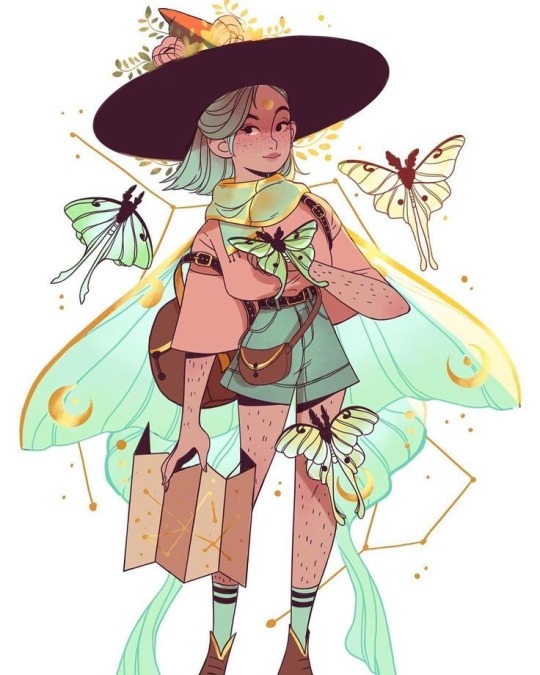
Just to point out in the image above, many artists who use moths and etc. symbols in their artwork are sometimes feminists and naturalists as well. Which is why the witch girl in the image above has slightly hairy arms and legs; they choose not to shave. I personally don’t see anything wrong with this choice, but I have noticed the pattern in women who choose to do this are making a conscous statement towards society.


Now onto the Death’s Head Hawk moth which symbolizes as an omen of death. This believe isn’t limited to this specific and rarely seen moth, but moths in many cultures have this similar folklore that foreshadows death. We knew moth follow the moon light at night and dwells is dark corners during the day. In many tribal cultures moths, and sometimes butteries, are able to cross into the spirit realm and return with messages for their ancestors. As Christians, we know this doesn’t match with our beliefs and what’s written in God’s Word.
Hope this blog post was helpful to you, my brothers in sisters in Christ! I continue to strive and post on this blog series every Wednesday. Bless You All, and have a Wonderful Merry Christmas!!!! 🎄💖 ✝️
#symbols#christians#the church#body of christ#warning#modern symbols#ancient symbols#awareness#knowlegde#understsnding#wisdom#discerment#from God#holy spirit#Trinity#occult#pagan#nature worship#witchcraft#Wiccan#moon#moon phases#moth#moths#spiritual#meaning#death#darkness#afterlife#red flag symbols for christians
2 notes
·
View notes
Text
did you know that green socks are a symbol often associated with queer men?

i follow Eleanor Medhurst, a lesbian fashion historian, on tiktok. she made this video researching green’s role in queer color history and stumbled upon the presence of green socks as a symbol for queer men in the U.S. in the 1960s.
the tradition dates back to before Celtic tribes inhabited the British Isles when “the British Isles were inhabited by a darker-skinned pagan tribal culture known as the Brownies or, alternately, the Fairies.” Their culture emphasized non-patriarchal values and sexual liberation, which most likely included same-sex relationships. If you’ve ever heard of queer men being referred to as fairies, this is why.
Green was a color often sported by these people. Alongside this, Thursday was a holy day, hence the old superstition/saying that wearing green on Thursdays means you’re queer.
Phillip Hiscock, an assistant archivist and cited source in Medhurst’s video, stated, “To wear green socks, by the same people*, was thought to be a sure token of queerness, of being homosexual.”
*people who took care to wear green on Thursdays
Source: Venetia Newall, ‘Folklore and Male Homosexuality’
I think it’s definitely interesting that the writers chose to emphasize Mike’s choice of green socks in this episode!
#mike wheeler is gayyyyyyy#mike wheeler#byler#byler analysis#mike wheeler is gay#mike wheeler analysis#stranger things analysis
433 notes
·
View notes
Text
A Collection of Greek Keywords for Hellenic Pagans (kharis, miasma, etc.)
Kharis:
Kharis means 'grace' or 'favour' and it is in reference to the reciprocal nature of our relationships with the gods.
Liddell and Scott describe it as, "A grace or favour felt on the part of the doer but more frequently on the part of the receiver in the form or thankfulness and gratitude."
It essentially means a favour done in delight. This can be both the offering we give to the gods, and the favours and blessings the gods bestow upon us.
Kharis is both the action of offering and worshipping and also what is built between a worshipper and a god through the actions of offering and reverence. It can be used like this:
'Giving an offering to the gods is an example of kharis.'
Or:
'I have built up kharis with Apollo over the years.'
Khaire/khairete:
Khaire or khairete are words that mean 'hail', 'farewell', or 'blessings'.
It can be used to greet someone, either as hello or farewell (I use it at the end of some of my posts). It can also be used at the end of a prayer.
Khaire is used to address one person or god, and khairete is used to address a group.
Miasma:
Miasma means 'stain', 'pollution', 'defilement', or 'stain of guilt'.
It is a type of spiritual pollution that a person or a place can collect through either happenstance or deliberate action. It makes us spiritually unclean but there is no damnation involved in miasma and thus is not similar to sin. Sin is more comparable to agos, which is mentioned later.
We tend to collect miasma while going about day-to-day life, almost like getting our hands dirty while working. The stain it refers to is always one of a spiritual nature; miasma is a strictly spiritual concept.
It makes a person or place ritually impure, hence it is inappropriate to interact with the divine while in a miasmic state. The gods are said to reject the offerings of a miasmic person or to vacate a miasmic place until it is cleansed.
Human blood is also considered to be miasmic when spilled outside of battle, though this is not the case for menstrual blood (although I tend to avoid praying and doing rituals during that week anyway as I consider it to not be my cleanest state possible. I use this time to tend to my altar physically instead, cleaning it and reorganizing it).
Miasma is very common, everyone gets it, mostly due to plain daily life, though sometimes due to deliberate actions. Miasma can always be cleansed.
Sources of miasma include:
Death in the home - Pollutes the grieving and the home. People and home need to be cleansed before interacting with the gods or going to temple.
Birth - Because of the blood involved. Mother and baby are considered by traditional standards to be miasmic for three days postpartum and both are generally cleansed at five days postpartum.
Intercourse - Both parties are polluted by the act and must be cleansed before interacting with the gods or going to temple.
M*rder/m*nsl*ughter - This collects both miasma and agos. The m*rderer becomes miasmic, and a place can become miasmic if a m*rderer is free and unpunished there. This does not apply to blood spilled in battle.
There is a line in Hesiod's Works and Days that refers to the action of cleansing oneself of miasma before interacting with the gods. It reads, "Never pour a libation of sparkling wine to Zeus after dawn with unwashen hands, nor to others of the deathless gods."
Khernips:
Khernips means 'handwash', or 'lustral water'.
It is basically Hellenic holy water. It is used to purify ourselves of miasma before interacting with the gods.
It can be made by dropping burnt herbs or laurel leaves (bay leaves) in clean water, or by dropping a lit match in clean water. Simply washing our hands in plain water can work symbolically as well if done with the specific intention of purifying oneself.
Agos:
Agos means 'curse', 'pollution', or 'abomination'.
It can be considered as a step up to miasma and, while not quite the same, it could also be considered comparable to sin. It is brought about through deliberate actions and it is very difficult, if not impossible, to cleanse. Agos can also invoke the divine wrath of the gods, so it does involve a form of damnation
Some things that cause/invoke agos include:
Having intercourse inside a temple
Temple robbing
M*rder
Bloodshed inside a temple or on sacred grounds
Broken xenia
The refusal to properly bury a family member or a soldier (even an enemy soldier)
K*lling someone who is under the gods' protection
Offering human blood to the gods (due to its miasmic nature)
Agos is hardly as common as miasma, so it is not something the general practitioner should worry about.

#🏛🕯#hellenic pagan#hellenic paganism#pagan#paganism#helpol#hellenic polytheism#hellenic polythiest#polytheism#polytheist
647 notes
·
View notes
Text
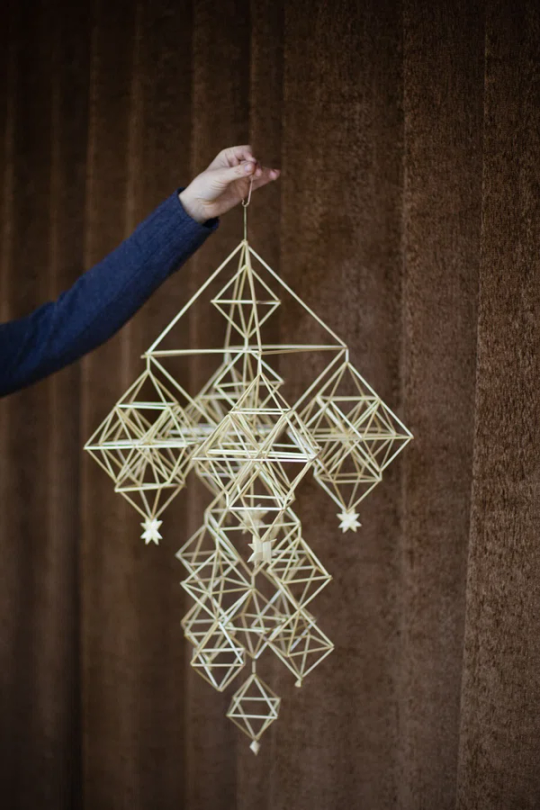
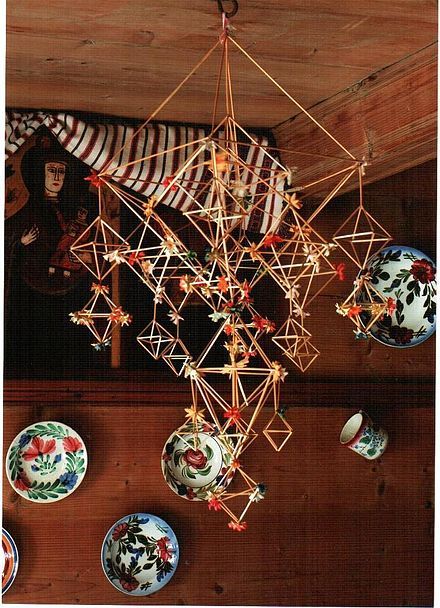


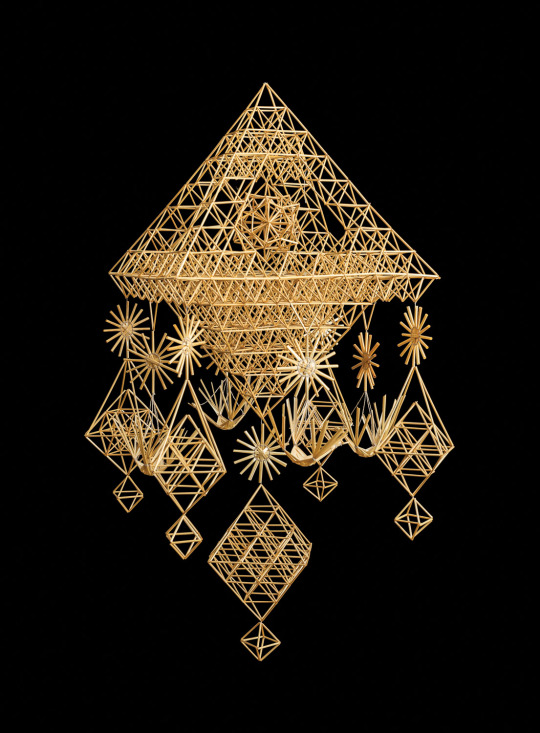

The Spider (павук) in Ukraine and in Belarus, or Straw Garden (šiaudų sodus) in Lithuania is an ancient pagan traditional decoration for the Christmas and other holidays, made of straw. Such "spiders" are considered talismans and symbols of the universe.
This decoration reflects pagan ideas about the creation of the world, the organization of space: a "spider" that "sweeps" the world - an image of the cosmos-universe.
According to Christian legend, the spider "founded" the entrance to the cave (according to another version around a tree), in which the Mother of God and the Child hid from Herod's soldiers, thus saving the Holy Family.
Spiders were hung in the house in the centre on a long hair from a horse's tail. Thanks to the circulation of air - through the front door and from the burning stove - the big "spider" together turned in different directions, casting whimsical shadows.
The Spider or Garden used to hang over the bed of the newlyweds on the first night because it was believed to have an influence on the growth of the family. When expecting a baby, the mother would tie a straw garden specially for the child and then hang it above the cradle, and the neighbors would bring a bird, angel, racket or small garden tied from straw, which they also used to make the little one happy. The baby used to observe these straw pendants, a mini model of the universe.
During the year, the spider "protected" the owners of the house, and all misfortunes and diseases were "entangled" in its web. Since ancient times, people valued fire as a sign of purification, so a spider that "lasted" for a whole year was necessarily burned before Christmas, and a new one was hung in its place.
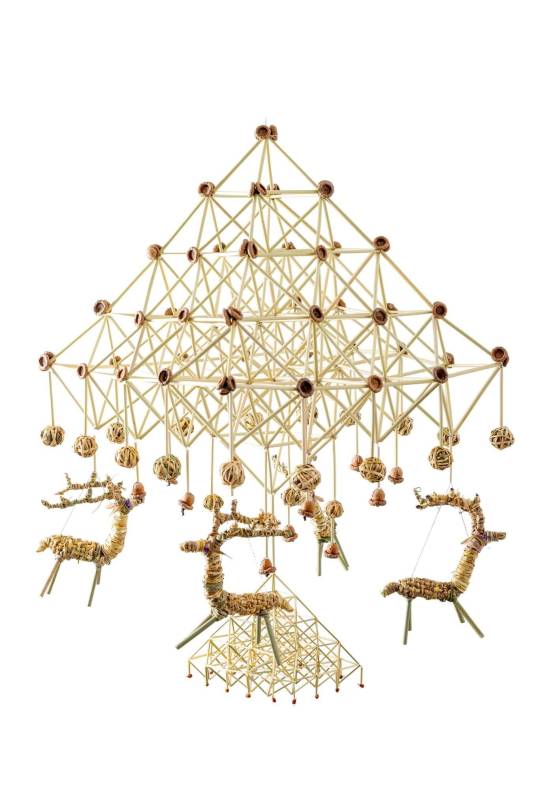
In Ukraine, the Spider is nowadays called the Christmas Spider and is especially popular in the north. In Latvia, it has several names: puzurs, ķists, saulīte, lukturi, krīģi, spurguļi. In Lithuania, it has even more names: liktorius (Varėnos, Panevėžio r.); voras (Ukmergės r.); vorys arba pajonkas (Suvalkai, lenk. pająk – voras); pajokas (Kaišiadorys); žarondeliai (Ignalinos r.); reketukas (Kupiškio apylinkėse); rekėžis (Kupiškio apylinkėse); krijelis (Kupiškio apylinkėse); širšuonas (Kupiškio apylinkėse); dangus (Kupiškio apylinkėse); rojus (Kupiškio apylinkėse); karulys (Mažojoje Lietuvoje).
#which allows me to suggest the Spider is the Grand Duchy of Lithuania tradition :>#Ukraine#Lithuania#Ukrainian traditions#Lithuanian traditions#Latvia#Belarus#paganism#укртумбочка#укртамблер#украрт#art
463 notes
·
View notes
Text

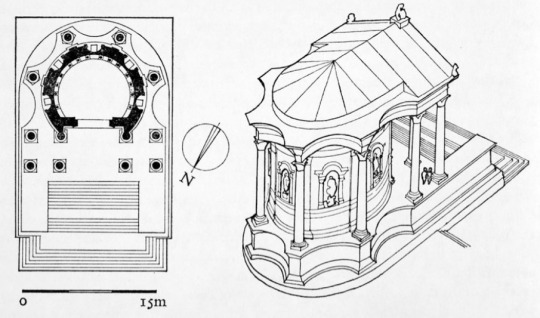


The Temple of Venus in Baalbek (Heliopolis), Lebanon was built in the 200s CE to honor the goddess of love, sex and fertility. Venus was derived by the Romans from the Greek goddess Aphrodite, who herself was inspired by the Near Eastern goddess Astarte. This temple's cult likely incorporated elements of both Roman Venus and the local Astarte.
The temple itself has many novel and unique features found nowhere else in Classical architecture. Five semicircular exedrae run along the outer wall, framing arched niches decorated with carved doves and seashells that probably contained statues in ancient times. Above each niche a festoon of leaves and fruit hangs, symbolizing fertility. The pentagonal column bases are without parallel in antiquity, and no other examples are known. The interior is less well preserved, but it can be safely assumed by the lavishness of the construction that it was once sumptuously decorated with paintings, statues, colored marbles and golden ornaments.
The temple has an eventful history, being also a site of persecutions of early Christians under Julian the Apostate, the last pagan emperor of Rome. Sozomen, a late antique historian, says in his Ecclesiatical Histories:
The inhabitants of Heliopolis, near Mount Libanus, and of Arethusa in Syria, seem to have surpassed them in excess of cruelty. The former were guilty of an act of barbarity which could scarcely be credited, had it not been corroborated by the testimony of those who witnessed it. They stripped the holy virgins, who had never been looked upon by the multitude, of their garments, and exposed them in a state of nudity as a public spectacle and objects of insult. After numerous other inflictions they at last shaved them, ripped them open, and concealed in their viscera the food usually given to pigs; and since the swine could not distinguish, but were impelled by the need of their customary food, they also tore in pieces the human flesh.
I am convinced that the citizens of Heliopolis perpetrated this barbarity against the holy virgins on account of the prohibition of the ancient custom of yielding up virgins to prostitution with any chance comer before being united in marriage to their betrothed. This custom was prohibited by a law enacted by Constantine, after he had destroyed the temple of Venus at Heliopolis, and erected a church upon its ruins."
Whether Sozomen's account is an exaggeration or not, there is archaeological evidence that the temple was indeed converted into a church, dedicated to Saint Barbara. According to the (comparatively late) Christian legend, Barbara was the daughter of a Heliopolitan dignitary, Dioscorus, who still worshipped the old gods. When he learned that she had been baptized, he killed Barbara and was immediately struck by lightning. Up til the present day, Saint Barbara is invoked if people want to be protected against lightning.
Because the monument continued to be in use, the temple of Venus is comparatively well-preserved. Unbroken religious activity has continued on almost the same site since antiquity, and there's still a small mosque next to the temple of Venus. The Greek-Orthodox church of Baalbek, which is close by, is still dedicated to Saint Barbara.
217 notes
·
View notes
Text
Types of divination
Please note: Not all of them are going to be here. I will be covering ones that Beginner witches can use and learn as a starting point! This also isnt a guide on how to do it, its is just some ideas and what they are.

Tarot and cards-
People who are unfamiliar with divination may believe that reading Tarot cards means "predicting the future." However, most Tarot card readers will tell you that the cards are only a guideline, and the reader is simply interpreting the likely outcome based on the forces at work right now. Consider Tarot as a tool for self-awareness and contemplation, rather than "fortune telling." Here are some simple steps to get you started reading and utilising Tarot cards in your divinatory practice.

Norse Runes-
According to Norse epic sagas, Odin created the Runes as a gift to humanity a long time ago. These sacred and holy symbols were originally etched in stone. Over time, they grew into a collection of sixteen letters, each with a metaphorical and divinatory significance. Learn how to create your own set of Runes and read what they say.

Reading tea leaves-
People have utilised many different ways of divination from the beginning of time. One of the most recognised is the practice of reading tea leaves, often known as tasseography or tasseomancy. This divination method, while not as ancient as some of the other famous and well-known methods, appears to have originated in the 17th century.

Pendulum reading-
A pendulum is one of the most basic and easy types of divination. It's as simple as asking and answering yes/no questions. Although pendulums may be purchased commercially for between $15 and $60, they are simple to create on your own. Most people use crystals or stones, but you may use any object with some weight to it. There are various methods to utilise a pendulum for divination, and you'd be amazed what you may learn from "yes" and "no" replies. The secret is to learn to ask the appropriate questions.

Osteomancy-
For thousands of years, tribes throughout the world have used bones for divination, a practice known as osteomancy. While there are several approaches, the goal is usually the same: to predict the future using the signals revealed in the bones.

Numerology-
Numerology is a discipline that many Pagan spiritual groups utilise. According to the basic concepts of numerology, numbers have a tremendous degree of spiritual and magical importance. Some numbers are more strong and powerful than others, and combinations of numbers can be created for magical purposes. In addition to magical correspondences, numerals have planetary importance.

Intuition-
Intuition is the capacity to know things without being told. Many intuitives make outstanding Tarot card readers because their ability offers them an advantage when reading cards for clients. This is sometimes known as clairsentience. Of all psychic talents, intuition may be the most frequent.

165 notes
·
View notes
Text
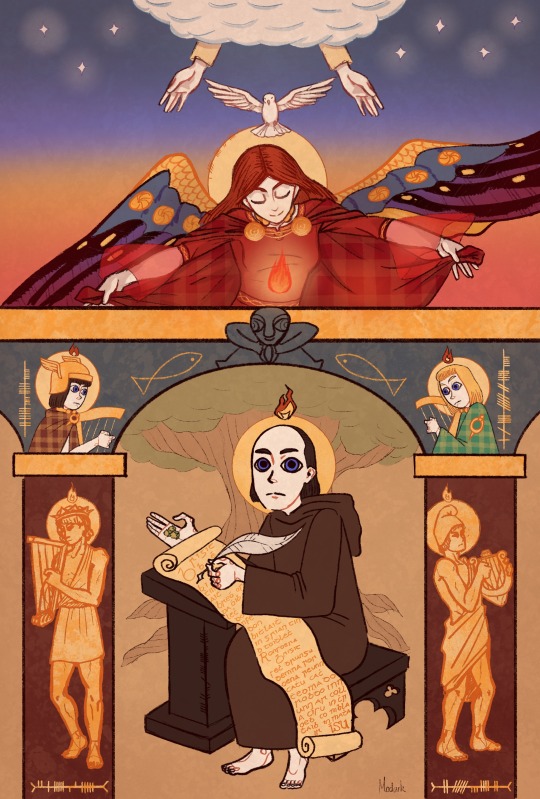
The Bardic Tradition
I made a long thread explaining in detail all the symbolism in this piece when I first posted it. That's lost to time now, thanks Elon. I'll try to rewrite it to the best of my ability in an abridged form.
The basic gist is that its a visual representation of the ancient Gaelic bardic tradition. Seated in the center is St. Colmcille, composing an old Irish hymn to St. Brigid, "Brigit bé bithmaith". He is holding hazel nuts, symbols of knowledge / inspiration in Irish legend. On the two pillars on either side of him are King David (left) and Orpheus (right), two famous poets from antiquity. Two legendary poets from Irish legend, Oisín and Amergin, are situated above each pillar respectively. The two fish are seen swimming "upstream" (as in the legend of the Salmon of Knowledge) toward a sheela na gig, a architectural feature / grotesque of early Irish churches which some consider to be symbols of femininity, meant to ward off evil. At the top of the image, hands from a cloud (representing God) release a white dove (representing the Holy Spirit) down to St. Brigid. She owes her angelic appearance to her being considered both a pagan goddess and Christian saint. She is guarding a flame, which symbolises poetic inspiration, and which can be seen floating above the heads of all the other figures.
#celtic#irish#poetry#celtic mythology#irish mythology#irish culture#ireland#celtic culture#celtic christianity#druidry#druidism#bardic inspiration#imbas#imbas forosnai#celtic revival#gaelic#st brigid#saint brigid#mythology#digital art#mediaeval#medieval art#medieval manuscripts#illuminated manuscript#celtic design#irish history#awen#esotericism#spirituality#paganism
72 notes
·
View notes
Photo

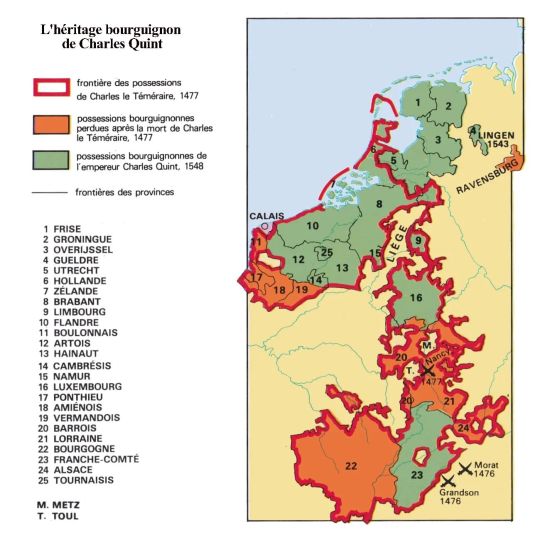
The Empire of Charles V
« Le grand atlas de l’histoire mondiale », Encyclopædia Universalis, 1979
by cartesdhistoire
Charles of Habsburg was a Burgundian duke who became king of Spain in 1516 and later Holy Roman Emperor in 1520. During his early years, the Burgundian heritage remained the primary cultural influence on the future Charles V, who was raised in the Netherlands. However, within him, all the legacies converged: Roman and Carolingian successions, messianism, crusading duty, the reestablishment of imperial supremacy, and the fulfillment of the latter through the conquest of the New World.
The title of Charles V reflects the complexity of his personal empire while exalting its grandeur. He is commonly referred to as "Cesarea Catholica Majestas," and he often described himself in documentation as "emperor and king," succinctly expressing a dual sovereignty consolidated under one ruler.
Contrary to the fears of his contemporaries, who perceived him as possessing implacable power and harboring ambitions of conquering Europe and the world, Charles V's imperial project did not aim for such dominion. Throughout his life, the emperor defended against such aspirations, as evidenced by his actions. However, he did have a plan for his title to be more than just an honorific designation but a functional role in its own right. The individual who received the imperial crown theoretically held the highest temporal authority after God – second only to the pope – and had no earthly superior. Charles V envisioned leading humanity along the path outlined by the Gospels, even if it required war against pagans and infidels.
This was the true vision of Charles V: to unite Christians in a quest symbolized by his throne without subjugating them. While he aimed to lead Christendom, he did not intend to completely merge it with the empire he governed personally. Such an endeavor would have been burdensome for all involved and required the systematic use of force, which did not align with the emperor's character.
67 notes
·
View notes
Text
Explain the basic: Offerings
Desclaimer: Everything I will talk about is information that I got from books and sites online and even videos on YouTube. In my years of practice, I learned as much as I could out of curiosity and what works best for me. I suggest you do the same by learning as much as you can on your own (I will be here making posts teaching this kind of stuff) from multiple sources.
Offering to deities and entities in general is a practice found in many cultures and religions around the world. Every deity or entity that you make an offering for has its own symbol. For example, Apollo is the god of the sun; music, art, and poetry; writing something or singing for him can be offerings.

There are many religions that take on the act of offering as a sign of respect and devotion to that specific religion. Here are some examples:
Hinduism: Offerings (puja) often include fruits, flowers, incense, and food, placed before images of deities in temples or home altars.
Buddhism: Offerings may include candles, incense, flowers, and food, placed before statues of the Buddha and bodhisattvas.
Christianity: Candles, bread, and wine are common offerings, especially in the context of the Eucharist.
Shinto: Offerings of rice, sake, and other food items are made at shrines to honor kami (spirits or gods).
Paganism and Wicca: Offerings might include seasonal fruits, flowers, wine, and personal tokens, placed on altars dedicated to specific deities or nature spirits.
All these religions have common practices that we can see and see over time; all of those are not rules but more something you can do or not do. (Especially because no one has the same opportunities.)
Altars: A dedicated space where offerings are made. This can be a simple shelf at home or an elaborate structure in a temple.
Purity: Many traditions emphasize the importance of purity in the offerings, meaning they should be clean and handled with respect.
Timing: Offerings are often made at specific times, such as during festivals, holy days, or particular phases of the moon.
Intention: The mindset and intention behind the offering are crucial. It should be given with respect, devotion, and a pure heart.

These offerings can take various forms, each carrying its own significance and purpose. Here's an overview of the different types of offerings and the common practices associated with them:
Types of Offerings
Food and Drink:
Fruits, grains, and vegetables: Often used in offerings to symbolize abundance and gratitude.
Cooked meals: Specific dishes that are favored by the deity or entity.
Drinks: This can include water, wine, milk, or other beverages. In some traditions, alcoholic drinks like mead or sake are common.
Sweets and desserts: Cakes, candies, or other sweet treats, especially those that are traditional or culturally significant.
Flowers and Plants:
Fresh flowers: Often chosen for their beauty and fragrance. Certain flowers are associated with specific deities.
Herbs:: Sacred or medicinal herbs may be offered for their symbolic properties.
Incense and Aromatics:
incense: Burned to create a fragrant smoke that is believed to please the deities.
Essential oils: Used for anointing or in diffusers to create a sacred atmosphere.
Candles and Lights:
Candles: Lit to symbolize light, purity, and the presence of the divine.
Oil lamps: Used in many traditions, often with ghee or olive oil.
Objects and Symbols:
Statues or images: Placed on altars as representations of the deity or entity.
Jewelry or precious items: Offered as a sign of respect and devotion.
Money and Valuables:
Coins or currency: Offered in temples or shrines, sometimes used to support the upkeep of the place of worship.
Jewelry or precious items: Given as a form of sacrifice or in seeking favor.
Actions and Devotions:
Prayers and chants: Recited to honor the deity or entity.
Songs and music: Played or sung as a form of praise.
Dance: Performed in some cultures as an offering of movement and energy.

Conclusion
Offering to deities and entities is a deeply personal and culturally rich practice. It serves as a way to connect with the divine, show gratitude, seek blessings, and maintain a reciprocal relationship with the spiritual world. The specific items and practices may vary, but the underlying principles of respect, devotion, and intention remain consistent across different traditions.
#manifestation#manifesting#shifting methods#loa methods#manifestation method#manifesation#journal#spiritual development#explain the method#explained#witchcraft#witches#witchblr#witch community#witchcore#magick#witch aesthetic#witchy vibes#baby witch#witch#witchcraft books#witchcraft 101#pagan#spiritual journey#spirituality#spiritual awakening#spiritualgrowth#spiritual healing#meditation#witchcraft community
75 notes
·
View notes
Text
So, not even a week after resuming my veiling practice, I experienced discrimination. I don’t wish to recount the experience to save my emotional energy, but I do want to go into why I’m glad I had this experience, and how it encourages me to continue.
Firstly, I want to acknowledge the fact that my preferred approach to veiling does in fact make me resemble Muslim women. And because of this, I want to give a heartfelt thank you to Muslim women worldwide for setting the standard for others who find empowerment and comfort in modesty. As a white person, I have been aware of and sympathetic to the plight of Muslim women worldwide, but it’s different when it happens to you. It cements it. My heart aches for your strife and is full by your courage. This is one reason I’m glad for this experience. It strengthens my resolve and compassion. Thank you.
Another reason I’m glad for the experience, is because it reiterates why I want to veil in the first place. I live in Midwestern America. Our bodily autonomy is quickly being stolen from us. Our bodies are hyper-sexualized and spoken about as if all I’m good for is having babies that the government can raise as cattle for the capitalist machine. It’s a physical symbol of rejecting that. I get to decide how I look to others. I get to decide who gets access to my body, not just in a sexual manner but as a whole. For me, it’s a radical act of feminism. It feels as though the fibers in my headscarves and coverings are woven together in a greater tapestry of women worldwide. I can feel it with Muslim women, whom I do not share a religion with, but share something more important: kinship, and sisterhood. My threads are woven with the Muslim women in France who are fighting legislation for their right to be modest (that is batshit insane) and also with those victimized by western imperialism (which gave birth to the Taliban). The tapestry is worldwide, including Jewish women and their tichels, other pagans with their bandanas and beanies, even traditional Christian women who wear lace coverings. But modesty and autonomy reach beyond the gender divide so I have home in those who are also men, nonbinary, gender-fluid, two-spirit, and many others. It is community. It filters out many people who show their true intentions and beliefs, and makes it so much easier to cut through the lies and masks of people whose support is conditional.
I have always been modest and prudish and now I can celebrate it, instead of being “othered” by it. I feel as though it is a symbol of my devotion, but also a form of radical self-care that I celebrate myself.
It is Hera’s Crown.
It is Athena’s War Helmet.
It is Hermes’ Winged Helmet.
It is Eurybia’s Cloak of the Ocean.
It is Hades’ Helmet of Shadow.
It is Hestia’s Veil.
It is Zeus’ Crown.
It makes me feel godly and holy. It protects me. It invigorates me. It gives me confidence.
Khaire.
#pagan#paganism#hellenic deities#hellenic devotion#hellenic pagan#hellenism#hellenic polythiest#hellenic community#hellenic gods#veiling pagan#veiling#polytheist#hellenic polytheism#polytheism#muslim
92 notes
·
View notes
Note
Hii genuine question. Are Christian holidays not actually from a basis of paganism? I felt like from what I’ve read about it before made sense to me
So like, a lot of people basically jumped to conclusions whenever a Christian holiday was either celebrated near the time of an old pre-Christian holiday, or its name sounded superficially similar to something pre-Christian, or its popular celebrations included elements that didn't seem quite Christian enough.
So, let's take Easter, for example. At one point, this guy Bede mentioned that the holiday got its name from "Eostremonath," IE, Eostre Month, which was named after an old goddess, Eostre. Now, that may very well be true, but it doesn't demonstrate that the holiday had pagan origins. See, when it comes to words for the holiday celebrating Jesus's resurrections, English is an outlier. Most European languages use words that derive from Pascha, which is ultimately derived from the Hebrew word Pesach, as in Passover.
There's also no evidence that Eostre's symbols included eggs or hares. In fact, everything we know about Eostre comes from Bede. Anything else is just guesswork. Dr. Andrew Henry of ReligionForBreakfast on YouTube, by the way, has a decent video on the topic of Eostre.
So why eggs, anyway? Well, back in the day, eggs were forbidden during Lent, so by the time Easter rolled around people had like a month's worth of eggs stacked up. So like, why not eggs?
And then of course, Alexander Hislop completely pulled the Easter/Ishtar connection out of his ass, because he was an anti-Catholic conspiracy theorist who did not care about scholarship, only about demonizing the Catholic Church.
Christmas has been claimed to have been derived from Saturnalia or Sol Invictus based on similarities in dates, but scholars have found that there was this belief that holy men died on the same day they were conceived. So if we start with Good Friday and fast forward nine months, that puts us either in December or January, depending on when exactly you believe Jesus was crucified. So Western traditions, which went for March 25, settled on December 25, whereas Eastern traditions, which went with April 6, got January 6. Dr. Andrew Henry talks about this here.
Christmas trees are also claimed to be pagan, but in reality they weren't a thing until the late medieval period. The earliest known reference to a decorated tree goes back to 1419. Or, it might be a tree; the word used ("Bom") could also mean a pole, as in a decorated pole like a maypole. It was shortly after this that people began erecting trees out in public squares. Again, Dr. Andrew Henry has a video on this.
And yes, it's true that Christmas is called something like Yule or Jol in other languages, but as we've determined from Easter, a name doesn't necessarily tell us where something came from. Most languages don't use anything like Yule; for example, English uses Christmas, as in, "Christ's Mass," while many languages use a word deriving from the Latin natalis, as in "birth," as in "Jesus's birthday."
Just about every attempt to link a Christian holiday to a pre-Christian one is operating on similarly poor methodologies. People just kinda drew conclusions based on things looking kinda similar without looking closer to see if they were really actually connected, or based on things not lining up with their personal ideas of how Christians ought to behave. (This whole idea that pure, true Christianity is sourced 100% from the Bible and the Bible alone is very Protestant, btw. It's also a position that would have baffled the earliest Christians, who didn't even have a New Testament and didn't regard things like the the epistles as holy scripture yet.)
Now of course, the Christianization of Europe didn't overwrite its cultures entirely, and local cultural beliefs and traditions ultimately did influence holiday traditions in some way; Christmas elves are a pretty clear example of this. But this whole idea that the Catholic Church just stole all these pagan holidays and remade them into Christian ones is pseudohistory.
50 notes
·
View notes
Text
Some random things that I liked to display.
The cloak collar for Byleth and Rhea can be a stylized look for halo. It is [from wikipedia], "been used in the iconography of many religions to indicate holy or sacred figures, and has at various periods also been used in images of rulers and heroes."

Slight difference in a male and female room

The description of the Horned Crown in FeHeroes shows the resemblance between Edelgard's and Sothis's crown. However, there is symbolism that explains some important things. 1) The red gem resembles an upside-down heart, which symbolizes turning relationships upside-down, and this is what happens with we relationship with Edelgard on most of the routes. 2) The star in a circle has been replaced by four lines, and may symbolize safflower thorns or a star with a faint light.
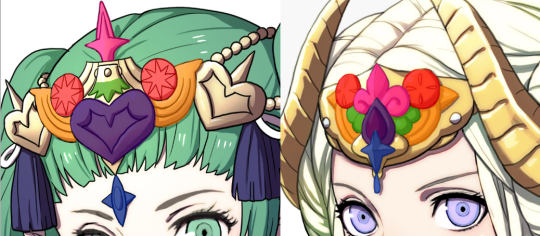
Her design contains stars, but unlike the eight-pointed star of the Nabataeans, she has a four-pointed star. A four-pointed star is smaller, less luminous, and farther from earth than an eight-pointed star. The hearts in her design are actually a stylized shape of a blooming or unblooming safflower. The Japanese name for safflower is 紅花, which is the same as her route name.

Her cloak has complementary color palettes with Seiros' cloak, plus it looks too big on her as if it were for a man. So, like her crown, her cloak may have originally belonged to Wilhelm, the first emperor of the Adrestian.


The statues in the cathedral, the renown icon, and a decapitated statue bordering the Shambhala map, the Pagan Altar, all resemble the depiction of the Nabataeans and the goddess in frescoes.
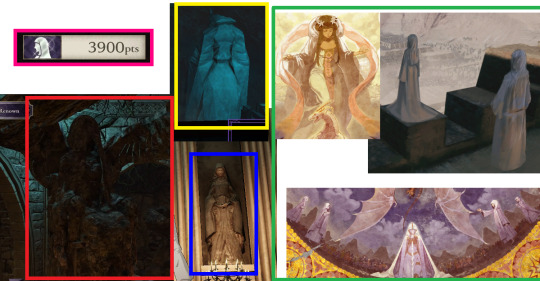
And I know there are those who will object to the pagan statue being Sothis, but you can see similarities between them from wings to cloak. Not to mention, if you focus on a chest, you will see that it is a female.

74 notes
·
View notes
Text

St. Vitus
c.290 - c.303
Feast Day: June 15
Patronage: actors, dancers, comedians, epileptics, dogs, and against oversleeping, snake bites, storms, animal attacks, lightning and Saint Vitus Dance (Chorea).
Saint Vitus, the son of a pagan Sicilian, became a Christian along with his tutor and nurse at the age of 12. When his father found out he had them arrested and tortured. Legend has it that an angel freed them from prison and they fled to Rome. While there, Vitus exorcised a demon from Emperor Diocletian’s son. When Vitus wouldn’t sacrifice to the pagan gods, they attributed it to sorcery and threw him in a pot of boiling oil, along with a rooster (as part of a ritual against sorcery). The rooster became a symbol for Vitus, making him the patron against oversleeping. He was martyred in Lucania, Italy and is one of the 14 Holy Helpers.
Prints, plaques & holy cards available for purchase here: (website)
31 notes
·
View notes